IN FOCUS: Wu Chi-Tsung | Applying Traditional Practices to Contemporary Photography
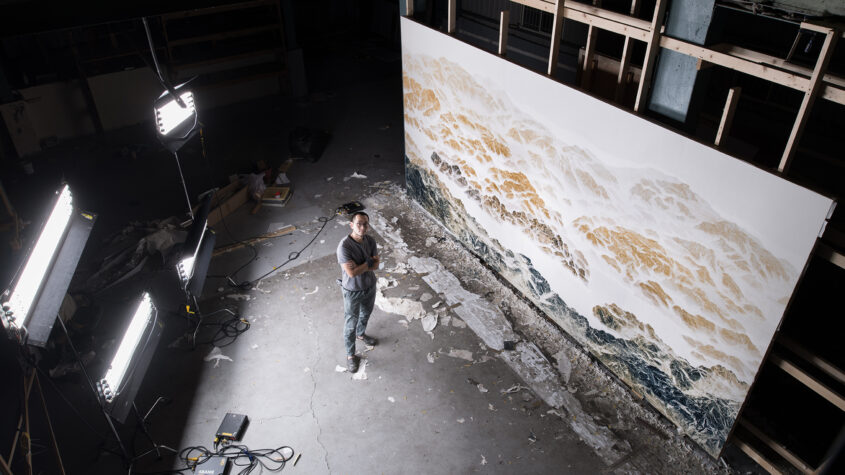
Taiwanese ‘on-the-radar’ artist Wu Chi-Tsung speaks to PHOTOFAIRS ahead of the Shanghai fair this month, where he will be exhibiting his fascinating works with Sean Kelly Gallery (New York & Taipei).
Interestingly, Chi-Tsung clarifies during the interview that he does not identify as a ‘photographer’, instead, he merges and unifies his extensive knowledge of multiple mediums to create dynamic, tactile-looking, and memorable artworks. The dilemma, the artist states, of distinctly categorizing art forms (such as painting, photography and contemporary dance), results in a ‘trapped’ mindset, thus limiting the potential for artists to develop and challenge themselves. PHOTOFAIRS, as a world-class art fair, aim to promote artists such as Wu Chi-Tsung, who are pushing the boundaries of photography and posing the question of how should photography be defined.
With an impressive portfolio including set-design, ink painting and video works, Chi-Tsung proudly represents what it means to be a contemporary artist in the 21st Century. We speak to the artist about breaking down barriers between mediums, the importance of preserving traditional methods and an exclusive step-by-step feature on how he creates the renowned ‘Cyano-Collage’ series…
“Sometimes it worries me that we have abandoned too many valued experiences and methods in traditional art as we transform too resolutely.”
PHOTOFAIRS: Your works display an exciting range of artistic mediums, such as painting, set design and photography. What is your thought process when deciding which medium to use for a project? What comes first, the idea and theme behind a project or the desire to use a specific medium?
WU CHI-TSUNG: Either way could be possible. Generally speaking, whenever I conceive a new project in any form, the language of painting is always my archetype. Every artist has his/her mentality, and painting is mine. For instance, the idea of ‘randomness’ from the eastern painting tradition (which partly is due to the nature of ink paints) is deeply rooted in me when I create my video installations and photography, like the Cyano-Collage series. I also imagine my art world via the spirit of paintings.
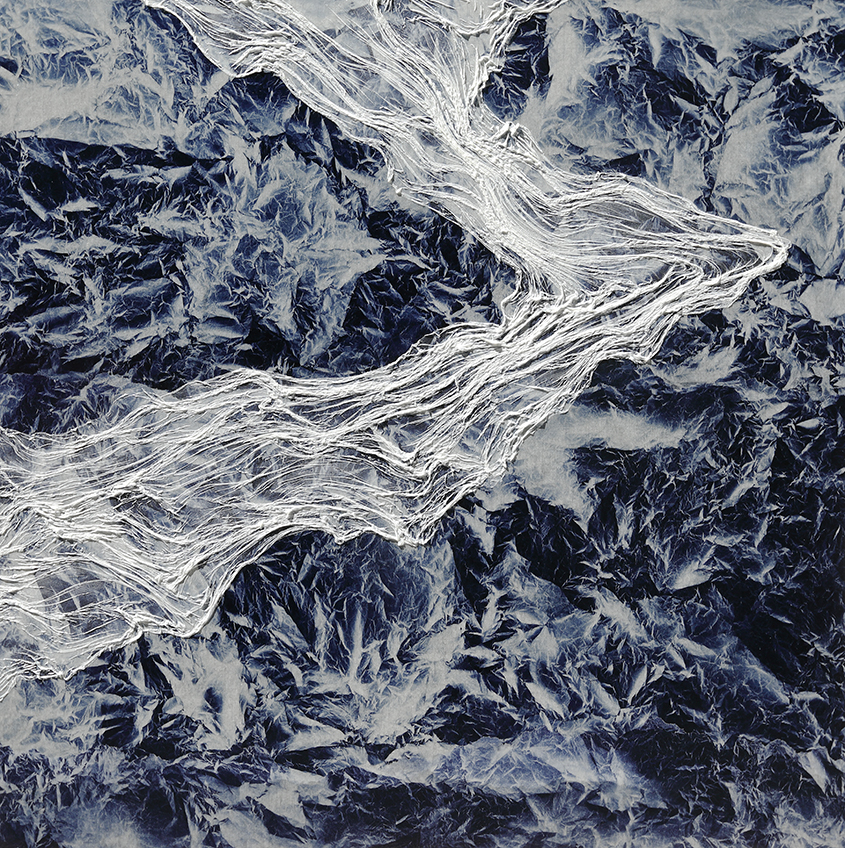
Part of PHOTOFAIRS’ objective is to explore the dynamic nature of photography as a medium, which includes presenting video works, installations and performance art to our audiences. One focus of the 2019 Fair is performance art and photography. With a career that involved set/stage design in collaboration with various institutions and performances, such as ‘Off the Map’ (2013) and ‘How Long is Now?’ (2017), how important do you think it is to combine performance art with other mediums such as photography, design or installation?
My experience in set design was mainly for contemporary dance. As dance itself might be abstract to many people, I consider it my duty to guide people to step into the world of the dance by visualizing certain elements. To me, what was the most difficult element of my job was to synchronize all the various elements on the stage. Every art form has its own time and space structure, and my duty is to organize everything to ensure they balance. For example, it is particularly difficult to apply videos to theatre, since the nature of the video is in the past, yet the performance is in the present. My experience in dealing with set design is similar to working with video installation; both require careful consideration of the relationship between the image and the space, and thus are more present than merely a single channel video.
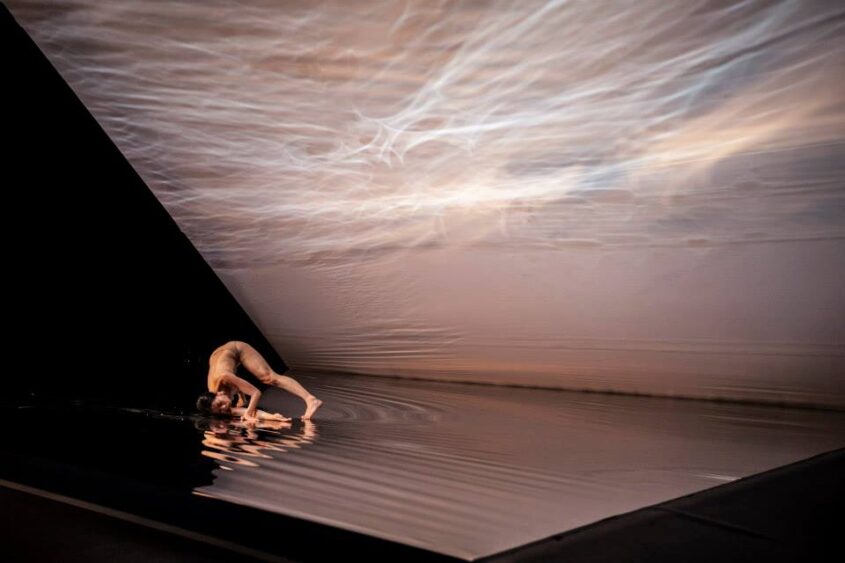
Your artistic journey began with painting, where you gained a Bachelor of Fine Arts in Oil Painting from Taipei National University of the Arts in 2004. What lessons did you learn from studying painting that you can transfer to your photography?
It is an old tune if I talk about my understanding of painting. However, if I transfer it to another medium such as photography, new meanings are created, which is what I aim for when I work across different mediums. I find it odd that people have set categories of mediums due to functional concerns, which eventually become a mindset that has trapped the way we think. I always try to seek the universal relevance of things and create a dialogue to connect them. I would not consider myself to be specialized in photography. I use photography as a tool to contemplate and express my thoughts. In my photography works, a hint of how time flows from the exposure to the manual collage is visible. The work is not static but a record of movements. On the other hand, my video installations are rather static that has few scenarios or changes.
Can you please tell us more about the ‘Cyanotype’ photographic technique, and how you used this technique in your impressive ‘Cyano-Collage’ series, which you will be presenting at PHOTOFAIRS | Shanghai 2019. Did you face any challenges working with this medium? Please also inform us on the significance of using this technique to commemorate Taiwanese Artist and Art Critic Mr. Ni Tsai-Chin.
My process follows the format below:
1. Cover the Xuan paper with the photosensitive solution, continually reshaping and crumpling the paper by hand to create the wrinkled effect during the exposure.
2. Leave the wrinkled paper exposed to sunlight for about thirty minutes to an hour and washing the paper to let the image fixed
3. ‘Read’ the papers to choose what could be used from the collage. Normally I choose only a few papers from dozens. I put one Xuan paper on the canvas, using a brush to flatten it. Next, I apply acrylic gel five or six times to seal the structure of the Collage. Every time a new layer of paper is added. I use blank papers to adjust the composition — to bring out the landscape, to create the depth, and to erase part of the image to leave empty space for imagination.
4. Finally, I apply the UV protective varnish to protect the cyanotype from sunlight.
The whole process is a bit similar to working on ‘layers’ in Photoshop, but no computers nor cameras are involved. The Cyano-Collage Series is based on the combination of what I have previously experimented in the Wrinkled Texture Series, experimental photography, and the aesthetics of traditional eastern painting.
The first challenge I met is that the nature of the Xuan paper is very different from the photographic paper that is normally used for cyanotype photography. I gradually learned, from my experience with Xuan paper, the complexity and variability of the material. The paper western painting adopts, for example the watercolor paper, has a coating so that the pigments would remain on the surface no matter how thick they are. However, in the raw Xuan paper (without alum) that is applied in ink painting, the pigments are absorbed. The extent that the ink seeps through the xuan paper can be controlled, creating greater possibilities.
Working closely and consistently with these traditional methods and materials like Xuan paper makes me aware of their limitations in the modern era, but also urges me to think about a way to inherit it by transforming it into contemporary practice. When my works were exhibited in the west, people were very intrigued by Xuan paper and thought that it resembles fabric.
I was deeply influenced by my work as an assistant for professional artist Ni Tsai-Chin, who was an experimental ink painter, conceptual artist, art historian and critic. His value and interpretation of art altered how I used to think about our tradition, and that is the reason why I paid tribute to him in my work.
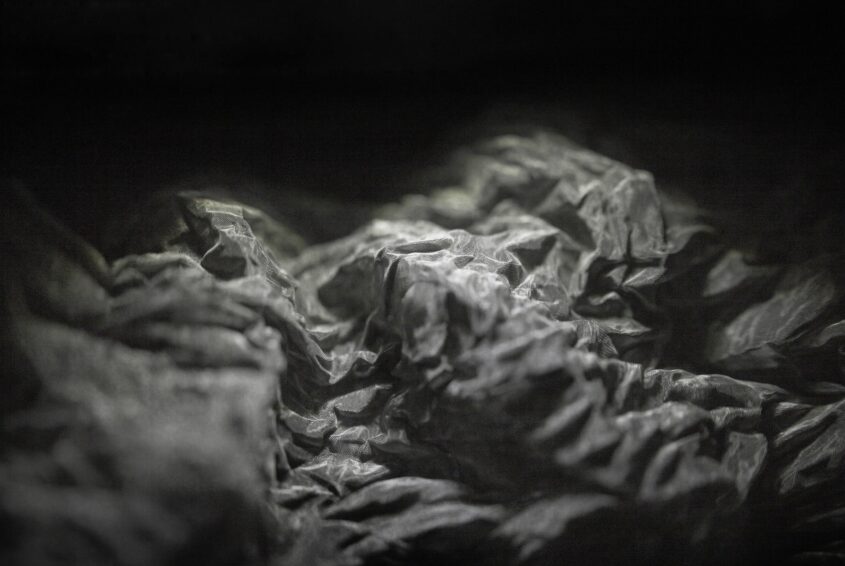
Your contemporary artworks often integrate traditional methods (such as Shan Shui to depict natural landscapes) into the process and overall aesthetic. How important do you think it is to maintain these traditional artistic techniques in photography today? Do you often notice other artists combining old methods with new in their artworks?
Many contemporary artists haven’t had the training of painting which makes it harder for them to comprehend the history of art from a creator’s point of view. Sometimes it worries me that we have abandoned too many valued experiences and methods in traditional art as we transform too resolutely.
People who only work in the contemporary art world would struggle to really understand what contemporary art is, and same for individuals who only focus on traditional forms. Personally, I appreciate Liu Jianhua and Yu Peng’s art, for they break the limitation of the traditions, whilst working closely with them. For me, working in the contemporary art world with traditional methods gifted me the ability to understand what is shared and what is irreplaceable.
As well as the ‘Cyano-Collage’ series, Sean Kelly Gallery has also incorporated the series ‘Landscape in the Mist’ (2012) into their current group exhibition titled ‘Abstract by Nature’. When did you start experimenting with video? Why did you choose to use video for this project?
I started working with video in 2001 whilst at university. After I was trained in traditional painting for more than ten years before college, I started to explore different mediums from ink painting to video. For about a year I have been taking my video camera everywhere. I film everything to capture contemporary daily experiences. I have been trying to create a dialogue in the language of new media art between video works and the training in painting that I have received. My ‘Landscape in the Mist’ video originates from the ‘Still Life Series’, both of which are my earliest attempt to combine my experiences in video and traditional painting. The ‘Landscape in the Mist’ series was inspired by the impressive landscape paintings of Camille Corot, creating a poetic atmosphere with traditional eastern painting.
What are you most looking forward to at PHOTOFAIRS | Shanghai? As an artist that does not work solely in photography, why do you think it is important for your work to be shown at our Fair in September?
Usually, I am invited to present my works at an exhibition which is one of three categories: contemporary art (new media art), photography, or traditional ink art. I am very much looking forward to learning how my work will be seen and discussed under the narrative of photography as well as in the context of mainland China.
聚焦:吳季璁 | 在當代攝影中實踐傳統技法
台灣最受關注的藝術家吳季璁在2019影像藝術博覽會前接受了博覽會的採訪,他的幾件精彩作品將在尚凱利畫廊(紐約,台北)的代理下亮相博覽會。
有趣的是,季璁在採訪中強調自己並不是一個「攝影師」,而是將他對於各種媒介的經驗相互融合與統一,以創造出生動可感、令人印象深刻的作品。藝術家認為,對於各種藝術門類(如繪畫、攝影與當代舞蹈等)會限制住人的思維,因而制約了藝術家去挑戰與超越自我的可能性。影像藝術博覽會作為世界一流的藝術博覽會一貫致力於推廣像吳季璁這樣去挑戰攝影的邊界、質疑攝影的定義的藝術家。
吳季璁是21世紀當代藝術家風貌的最好代表:他履歷豐富,創作門類橫跨舞台設計、傳統繪畫與影像等。我們與他探討了藝術媒介之間界限的打破、保護與發展傳統技法的重要性、還有藝術家知名的「氰山集系列」的詳細創作過程等……
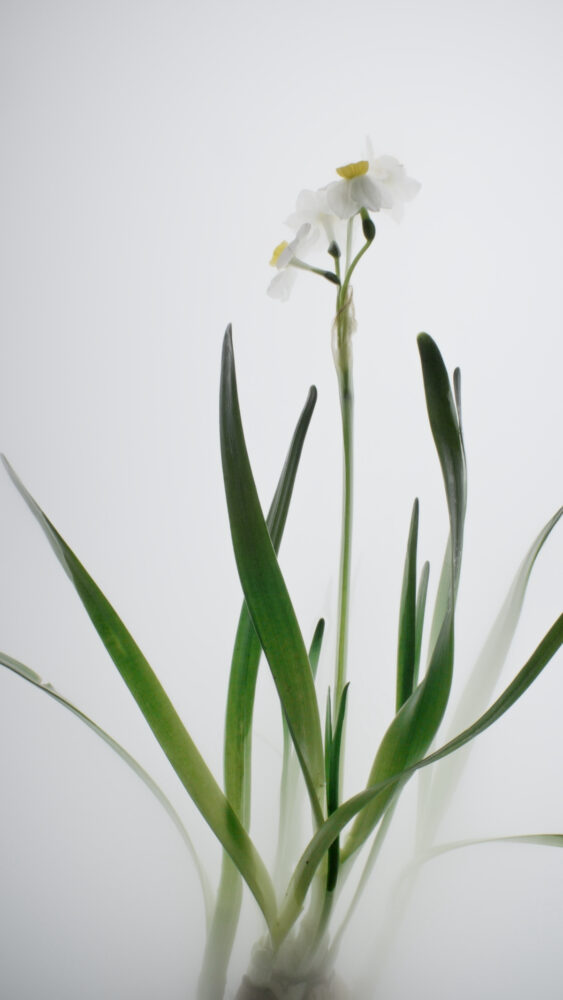
“有時候我會擔心我們因為發展太快、太急而放棄了太多傳統藝術中 寶貴的經驗與方法。”
影像藝術博覽會(後簡稱「博覽會」:你的作品涉及繪畫、舞台設計與攝影等不同種類的媒材,你完成一個項目時,如何決定使用何種媒材?你的作品一般是起源於一個想法,還是源於對於嘗試運用一種媒材的渴望?
吳季璁:都有可能,每個不一樣,整體來講我在想象不同媒材創作的時候,我思考的原型是源自繪畫。每個藝術家可能都有其思想方法(Mentality),而我的就是繪畫。像東方繪畫傳統中的隨機性(受水性材料的性質影響)對我做錄像裝置或氰山集等攝影影響很深。我會用繪畫的精神去思考我的藝術世界。
博覽會:PHOTOFAIRS的宗旨之一是發掘攝影作為媒介的充滿活力的本質,2019年PHOTOFAIRS的重點關注即為舞台藝術與攝影。你有過與不同機構與表演者合作進行舞台設計的經驗,你怎樣看待舞台藝術與諸如攝影、設計或裝置等其他媒介的合作?
吳季璁:我做舞台設計的經驗主要來自於與當代舞蹈領域的合作。舞蹈本身對大部分人太抽象,我認為我的角色正是通過把某些東西視覺化,引導大家進入舞蹈想談的世界 。我面對的很大的挑戰是如何同步、聚焦不同的舞台元素。每一種藝術形式都有其內在的時間與空間結構,而我的工作正是要保證它們之間互相平衡,把它們同步聚焦到當下。比如說,在劇場中運用影像元素是很睏難的,因為影像的本質是屬於過去式的,而舞台演出則在當下。我認為做舞台設計與做影像裝置有相似之處,它們都需要對影像與空間進行審慎安排。
博覽會:你2004年畢業於台北藝術大學油畫係畢業,可以說你的藝術道路是繪畫開始的,繪畫對你現在的攝影藝術有什麼影響?
吳季璁:我對於繪畫的思考和理解放在繪畫去談便是老生常談,但將之轉化到不同的領域,比如攝影中去,則會產生不同的意味與價值,這便是我轉換媒體形式的目的。我認為一個很奇怪的事情就是我們為藝術定下了不同分類,一開始是為了功能性之便,但是逐漸的我們所有思考方式都被這個框架限定住了。相較於關註各種媒材之間的差異、我更感興趣其共同性。這有點像談當代藝術的時代性的時候,我感興趣的是超越時間、不改變的東西。我不認為我自己專注於攝影,而是在藉助攝影來思考與表達。我的攝影作品中有多很時間的流動性在裏面,從曝光到拼貼,它不是單純靜態的東西,而是記錄著運動。而另一方面,我的錄像其實則是非常靜態的。
博覽會:可以請你為我們介紹一下氰版攝影法,以及你如何利用這一方法創作氰山集系列的嗎?使用這一方式創作,你有遇到什麼挑戰嗎?另外,請向我們介紹你如何利用這一方法向倪再沁先生致敬?
吳季璁:我的創作過程簡述如下:
- 將宣紙上塗佈感光塗料,用手將紙張不斷揉皺,以製造出曝光後的皴法效果。
- 將紙放在陽光下曝光約30分鐘至一小時,然後沖洗紙張,令影像固定。
- 「讀紙」,挑選適合作品使用的紙張,一般幾十張中只能選出一張。接著,我會將宣紙一層層固定在木板上,用刷子刷平。再塗上五、六層亞克力膠進行固定。每次加上新的一層紙,我都會加進一些白紙以保證留白、調整構圖。
- 使用UV防護油,防止氰版攝影在陽光中變色。
整個過程有點像Photoshop中的圖層的概念,只是其中並沒有電腦或相機的參與。「氰山集系列」是基於「皴法習作」系列發展而來的,其技法與美學均基於創作「皴法習作」的經驗。
創作「氰山集系列」時我遇到的第一個挑戰是宣紙的材料屬性。宣紙的變化性和覆雜度遠大於一般氰版攝影使用的相紙。對於材料的研究是最開始的挑戰,我也逐漸發現宣紙是格外特殊而精彩的材料。比如西方的紙張,像水彩紙,表面有塗層,無論多厚重的顏料都只會停留在表層。東方沒有放礬的生紙,雖然很薄,但顏料吸收在裏頭。墨進入紙張的層次各不不同,筆筆分明,時間性的變化可以記錄在上頭,創造出更多的可能性。
使用傳統方法與材質進行創作讓我更了解這些逐漸消失的東西,看到它們時代性的局限。我也希望能夠通過轉換材質的方法可以讓這些東西延續下去。當我的作品在西方展出時,大家都對宣紙的材質很好奇,覺得像布料,我也希望這能夠啟發其他文化和區域的藝術家去使用它,在跨文化的語境中去開發它的可能性。
我的創作受倪再沁老師影響很大。他是一位實驗水墨畫家、實驗藝術家、藝術史學者與評論人。他的很多觀念完全扭轉了我對於自身傳統的理解,這也是為什麼我通過作品來向他致敬。
博覽會:你的當代藝術作品經常與傳統水墨技法與美學相結合,你認為在當代攝影中保留傳統技法的重要性何在?你會經常注意到其他藝術家是如何結合傳統方法與當代藝術的嗎?
吳季璁:現在很多當代藝術家可能沒有繪畫訓練經驗,他就很難從創作的角度去理解美術史,其角度和學者沒有太大差別。有時候我會擔心我們因為發展太快、太急而放棄了太多傳統藝術中 寶貴的經驗與方法。只活動在當代世界創作的藝術家不會理解當代藝術是什麽,對於只活動在傳統藝術領域的藝術家亦然。只有在其間遊走,才能讓我意識到其中改變的東西是什麽,而我更感興趣的地方是,其不變的東西是什麽。 我個人比較欣賞于彭與劉建華的作品,他們能夠從非常傳統的角度出發,又跨越時代性的限制。
博覽會:除了「氰山集系列」外,在Sean Kelly畫廊當前的展覽中也展出了你的「煙林圖系列」,你是什麼時候開始嘗試影像媒介的?你為何選擇使用影像來呈現「煙林圖系列」系列?
吳季璁:2001年左右,我還在大學的時候便開始嘗試影像。在進大學前我已經接受藝術教育超過十年了,大部分都是用學院傳統訓練來學繪畫。因此上大學後我開始嘗試其他媒介,先是實驗水墨,後來變開始嘗試影像。有一年的時間我每天帶著攝影機亂拍。我從一開始就試著在用錄像與我接受的繪畫傳統訓練去對話。「煙林圖系列」起源於「小品系列」,這兩組作品都是我將影像媒介與傳統美學相結合的早期嘗試。「煙林圖系列」是受到柯羅的畫作啟發,他的風景畫中那種詩意的氛圍讓我看到了美的共通性。
博覽會:在PHOTOFAIR上海中你最期待什麼?作為一個不只從事攝影的藝術家,為什麼你認為你的作品參加PHOTOFAIR是重要的?
吳季璁:我的作品經常受邀參加三個領域的展覽:當代藝術(新媒體藝術)、水墨與攝影。我喜歡遊走在不同領域,也非常期待看到我的作品放在攝影的脈絡下以及在大陸的語境中如何被欣賞與討論。
More Information